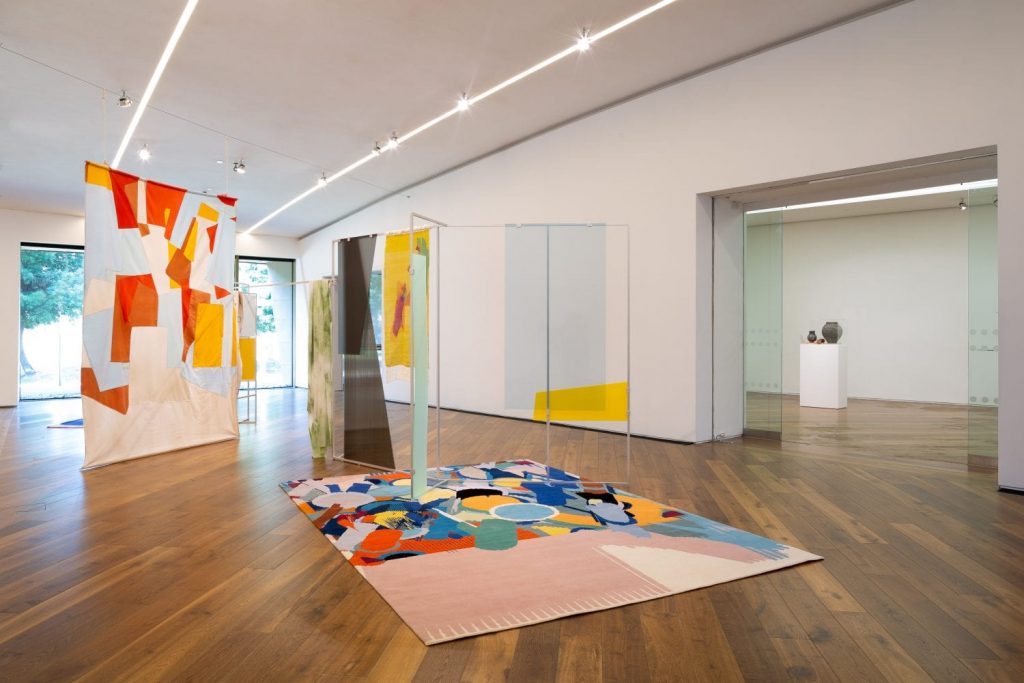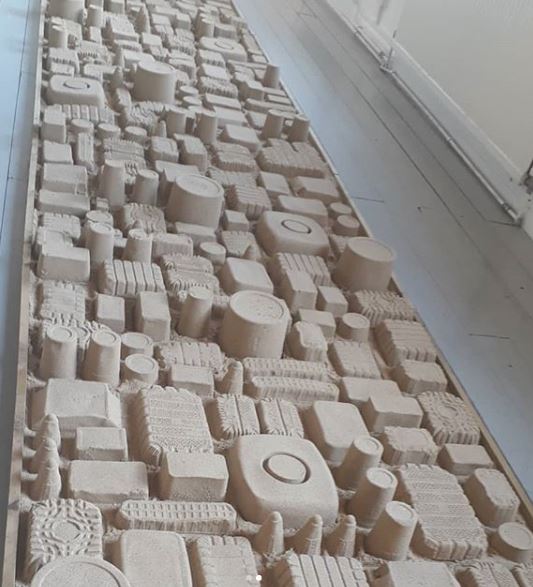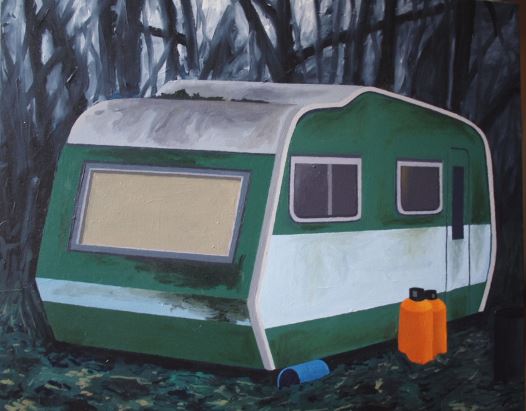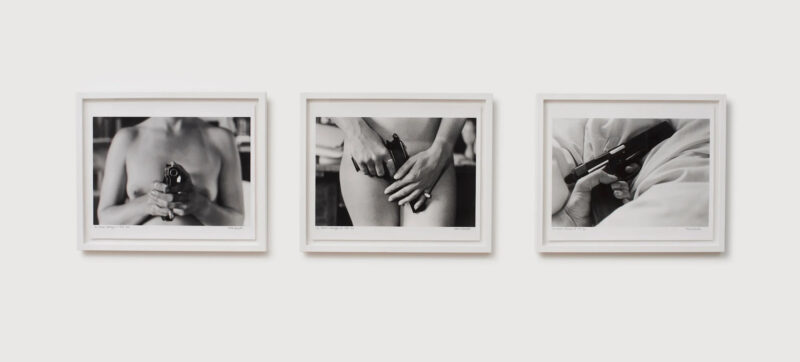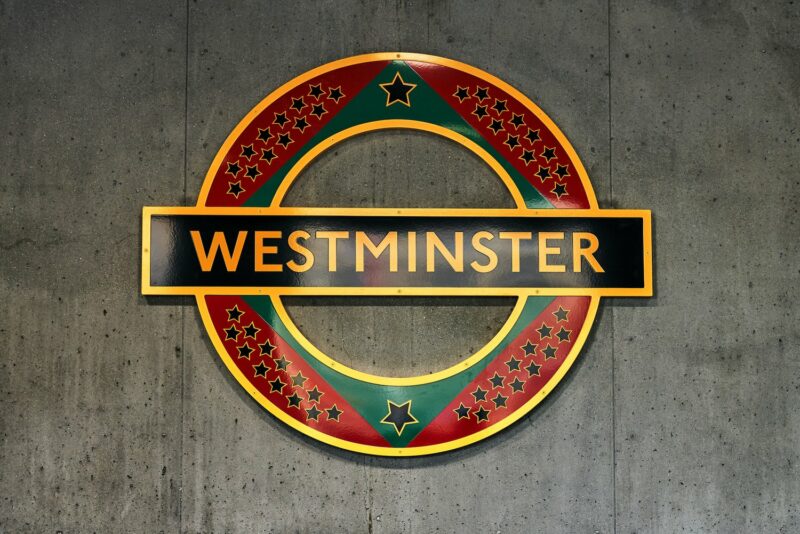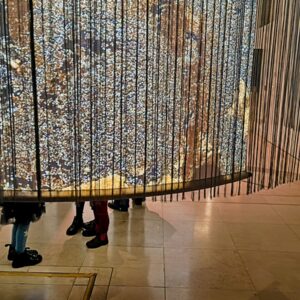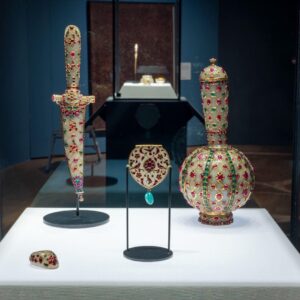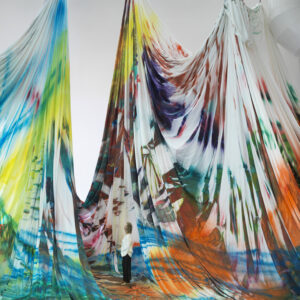I found myself in Colchester last week. Obviously, it’s known mainly for its Roman history, but there is also contemporary art interest. At the purpose-built Firstsite, there are four shows well worth seeing.
- Mark Titchner’s ‘Some questions about us’ explores the tensions between the different belief systems, be they religious, scientific or political. Above is one side of ‘Everything that I am not’ 2019 – a two-sided banner which says ‘US’ on the reverse. On the one hand the distancing ‘IT’ and the inclusive ‘US’ represent negative and positive for immigrant communities which Titchner consulted in conceiving the work. On the other hand, both I.T. and U.S. could stand ambiguously for control and freedom. Quite a lot to get out of four letters!
- Elsa James’s ‘Black Girl Essex’ provides assertively entertaining filmed reenactments of Carribean lives from local history.
- Siobhan Coen’s installation ‘Unknown Knowns’ gives an animated psychedelic setting to the word of Donald Rumsfeld, expanding beyond his known known identification of unknown knowns…
Lilah Fowler: ‘Code Clay, Data Dirt’ (one installation view above) operates by treble trans-historical analogy: the Roman use of clay chimes with modern IT’s reliance on the earth’s rarer mineral resources such as copper and platinum; the weave of textile parallels computer coding; and dishes of algae forecast the future of an organic technology. All of which feeds nicely into visually seductive installations.
The Minories – which was Firstsite’s first site – still puts on shows of a more local nature. I like how Andy Greenacre (above) skewers the impact of the 520 items of plastic which the typical Briton consumes in a year by turning each into a sandcastle, the grouping of which reminded me of the trays on which chocolates rest in a box. A good deal of such waste, after all, is washed onto beaches.
Colchester Gallery may not be as grand as it sounds – just the gallerist’s front room – but also had an interesting show. For may years Tony McCorry has painted blocky cityscapes which combine typical features of commonplace architecture: more recently he fell on hard times and had the style ready for an effective documentation of homelessness. Below is ‘Sanctuary’, the relief of a caravan.

